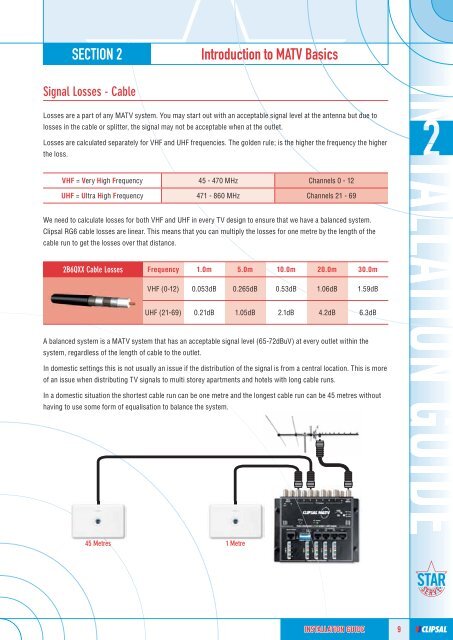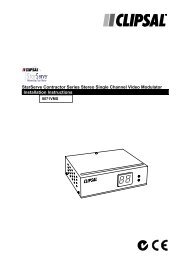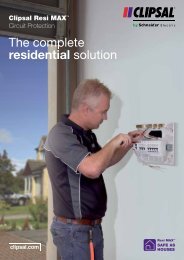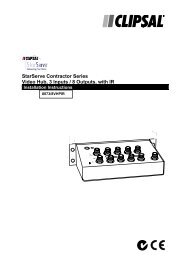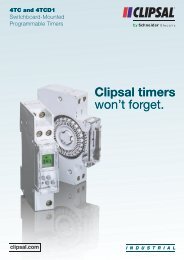Clipsal StarServe - Installation Guide, 11635
Clipsal StarServe - Installation Guide, 11635
Clipsal StarServe - Installation Guide, 11635
- No tags were found...
You also want an ePaper? Increase the reach of your titles
YUMPU automatically turns print PDFs into web optimized ePapers that Google loves.
SECTION 2Introduction to MATV BasicsSignal Losses - CableLosses are a part of any MATV system. You may start out with an acceptable signal level at the antenna but due tolosses in the cable or splitter, the signal may not be acceptable when at the outlet.Losses are calculated separately for VHF and UHF frequencies. The golden rule; is the higher the frequency the higherthe loss.VHF = Very High Frequency 45 - 470 MHz Channels 0 - 12UHF = Ultra High Frequency 471 - 860 MHz Channels 21 - 69We need to calculate losses for both VHF and UHF in every TV design to ensure that we have a balanced system.<strong>Clipsal</strong> RG6 cable losses are linear. This means that you can multiply the losses for one metre by the length of thecable run to get the losses over that distance.2B6QXX Cable Losses Frequency 1.0m 5.0m 10.0m 20.0m 30.0mVHF (0-12) 0.053dB 0.265dB 0.53dB 1.06dB 1.59dBUHF (21-69) 0.21dB 1.05dB 2.1dB 4.2dB 6.3dBA balanced system is a MATV system that has an acceptable signal level (65-72dBuV) at every outlet within thesystem, regardless of the length of cable to the outlet.In domestic settings this is not usually an issue if the distribution of the signal is from a central location. This is moreof an issue when distributing TV signals to multi storey apartments and hotels with long cable runs.In a domestic situation the shortest cable run can be one metre and the longest cable run can be 45 metres withouthaving to use some form of equalisation to balance the system.45 Metres 1 MetreINSTALLATION GUIDE9


